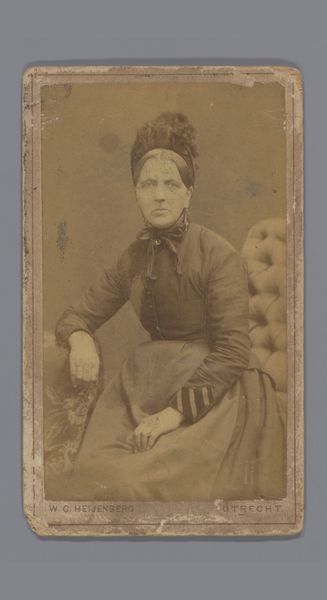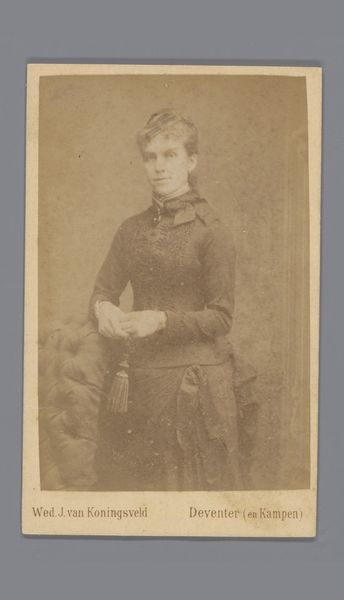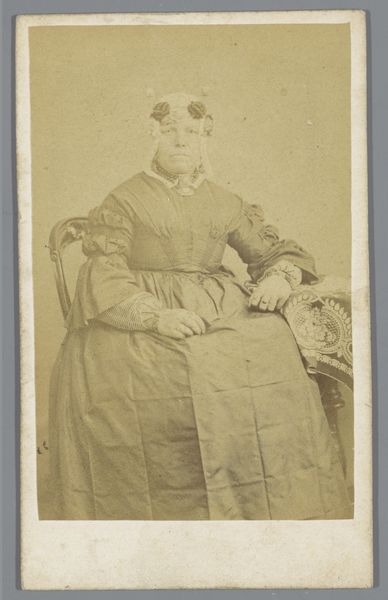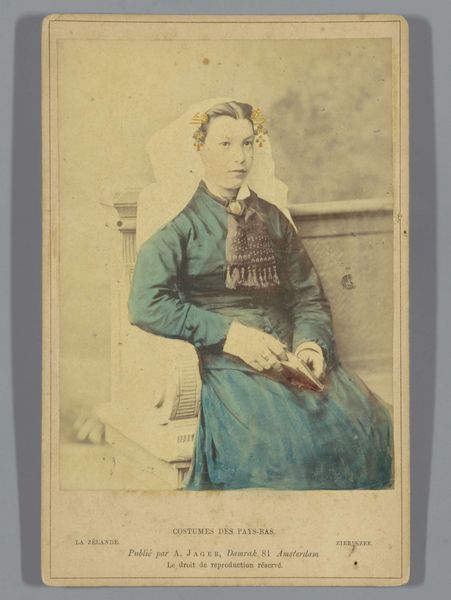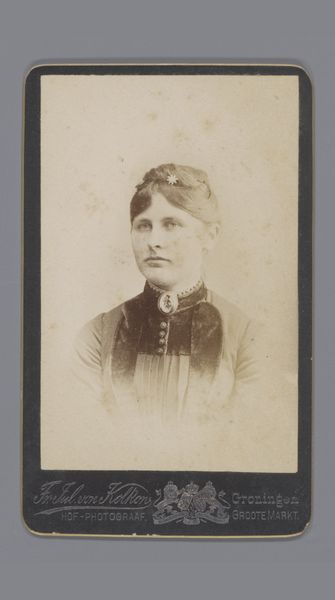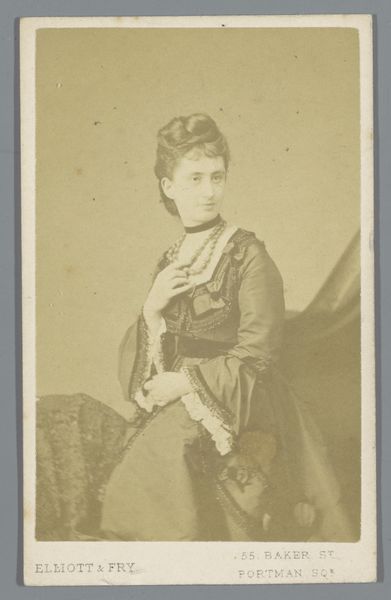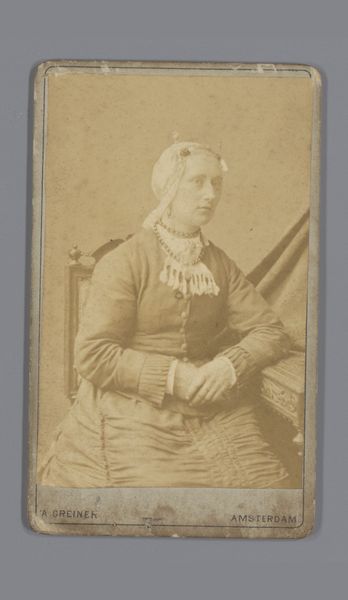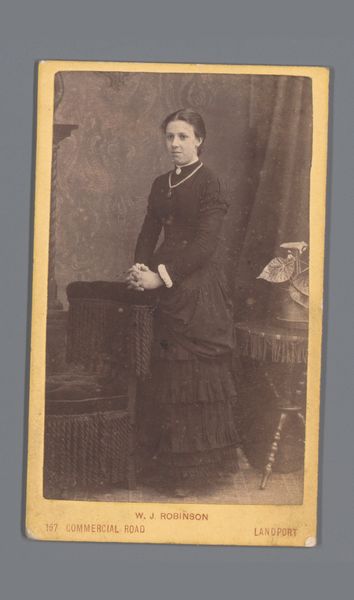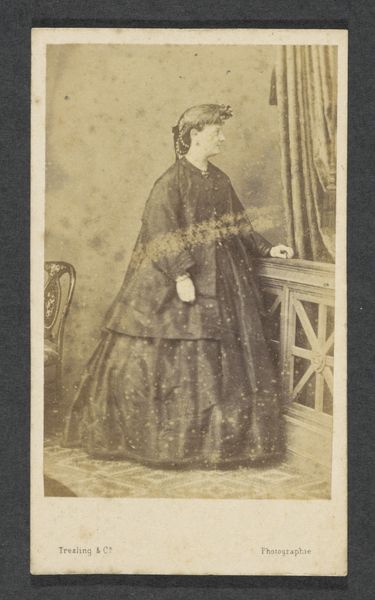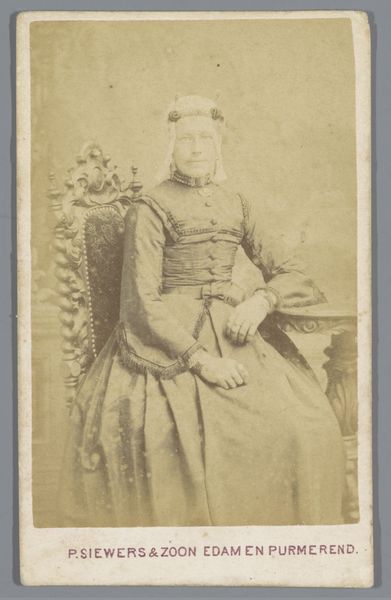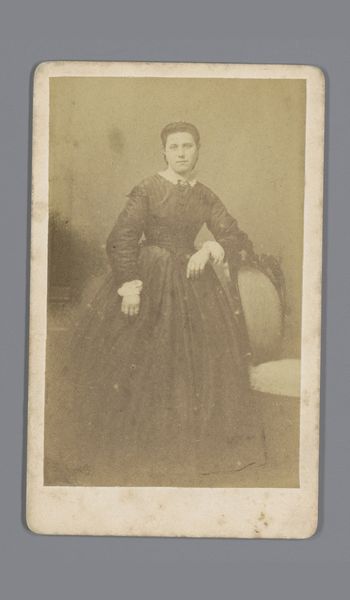
photography
#
portrait
#
dutch-golden-age
#
photography
#
realism
Dimensions: height 103 mm, width 62 mm
Copyright: Rijks Museum: Open Domain
Editor: Here we have a photograph, "Portret van een onbekende vrouw in klederdracht," taken between 1874 and 1887 by Albert Greiner. It strikes me how formal it is, almost staged, yet there's a strong sense of realism. How do you read this image? Curator: Well, first, let's consider the materiality. It's a photographic print, a relatively new medium at the time, democratizing portraiture. Who had access to this technology, and how did it change representation? It invites us to examine how class and technology intersect. Think about the fabrics; the heavy cloth of the woman's dress against the delicate lace of her cap. Editor: It’s interesting you point that out, the contrast. I was mostly focused on the face. Curator: But the *making* of this image tells a story. How much labor was involved in producing the clothing she's wearing, the chair she's sitting in? Even the photographic print itself is a product of industrial and chemical processes. Editor: So you are looking at it from the perspective of labor involved. It gives me a new way of contextualizing it. Curator: Precisely. It’s about unpicking the layers of production, of understanding art not as isolated genius, but as a result of materials, labor, and social context. Photography wasn't just about capturing reality, it was about participating in new systems of production and consumption. Editor: That really reframes how I see photography of this period. It’s not just a document, it’s part of an economic system. Thank you! Curator: And thank you. It's through conversations like these that we can really see how the value and meaning of art is tied to its creation.
Comments
No comments
Be the first to comment and join the conversation on the ultimate creative platform.
